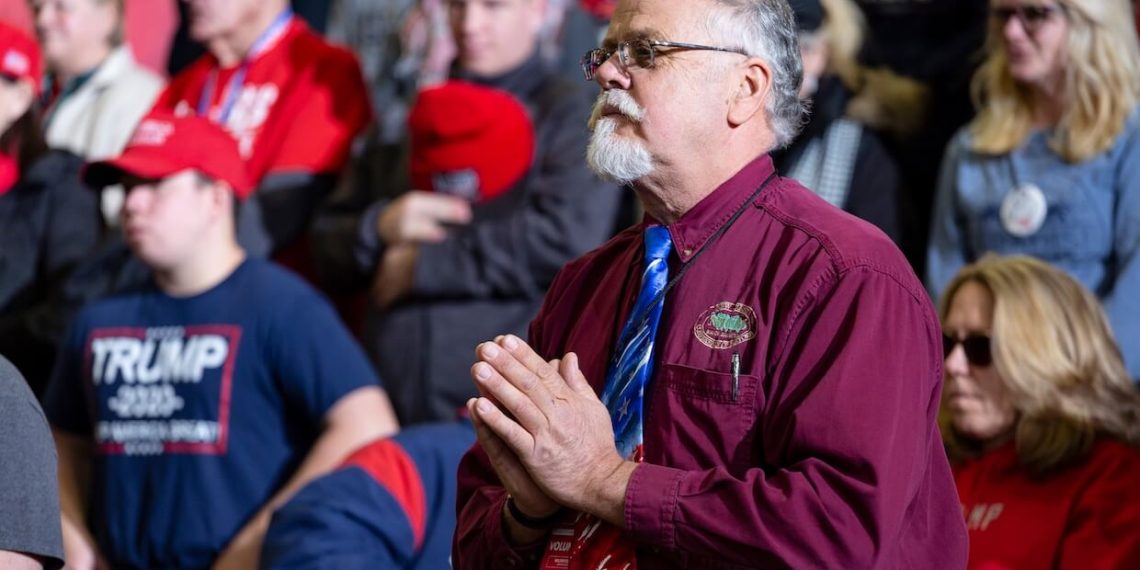In an exclusive interview with ECPS, Professor Julie Ingersoll exposes how Christian Nationalism, Reconstructionism, and Catholic Integralism have coalesced into a powerful theocratic force behind Trump’s second presidency. She explains how these groups reject democracy, embrace authoritarian governance, and aim to reshape American society under biblical rule. “They all seek to make religion the dominant force in shaping society,” she warns, highlighting Project 2025 and figures like Paula White as key players in this movement. This is not a fleeting moment but a systematic, decades-long effort to transform US governance.
Interview by Selcuk Gultasli
For decades, the influence of religion on American politics has been a subject of intense debate. While the United States was founded on principles of religious freedom, it has never fully separated faith from governance. Now, with Donald Trump’s second presidency, this intersection is more powerful than ever, as a broad-based coalition of Christian movements seeks to shape policy and redefine democracy itself.
In a revealing interview with the European Center for Populism Studies (ECPS), Dr. Julie Ingersoll, Professor of Philosophy & Religious Studies and Religious Studies Program Coordinator at the University of North Florida, unpacks how Christian Reconstructionism, Christian Nationalism, and Catholic Integralism have coalesced into a powerful force behind Trump’s agenda and the broader transformation of American governance.
"It’s huge. And this is where we get into expanding our understanding from Christian Reconstructionism specifically to the broad-based coalition of various versions of Christianity that are in power at the moment," says Professor Ingersoll.
She traces this movement’s ideological roots back 75 years—to Christian Reconstructionists, who developed a biblical worldview that sought to apply scripture to every aspect of life. Over time, they joined forces with Charismatic Pentecostals, forming what is now called the New Apostolic Reformation (NAR)—a movement that believes in spiritual warfare, divine authority, and the division of people into “God’s people” and “Satan’s people.”
But their influence doesn’t stop there. A third group—Catholic Integralists—have also entered the political fray, advocating for a return to a society in which the church and state are united under a hierarchical order. These groups, Professor Ingersoll warns, are not merely religious factions but political actors with a shared vision of theocratic governance.
"They all seek to make religion the dominant force in shaping how society functions. While they may have different visions of what that should look like, they agree on the goal," she explains.
One of the most striking elements of this coalition is its rejection of democracy. While they tolerate elections when they serve their interests, they are equally comfortable with authoritarian rule, monarchy, or any system that delivers a biblically ordered society.
As these forces gain more power—through figures like Paula White in the White House or Project 2025 at the Heritage Foundation— Professor Ingersoll argues that ignoring their long-term ambitions is dangerous. This is not a fleeting moment in American politics; it is a systematic effort to reshape the country’s future.
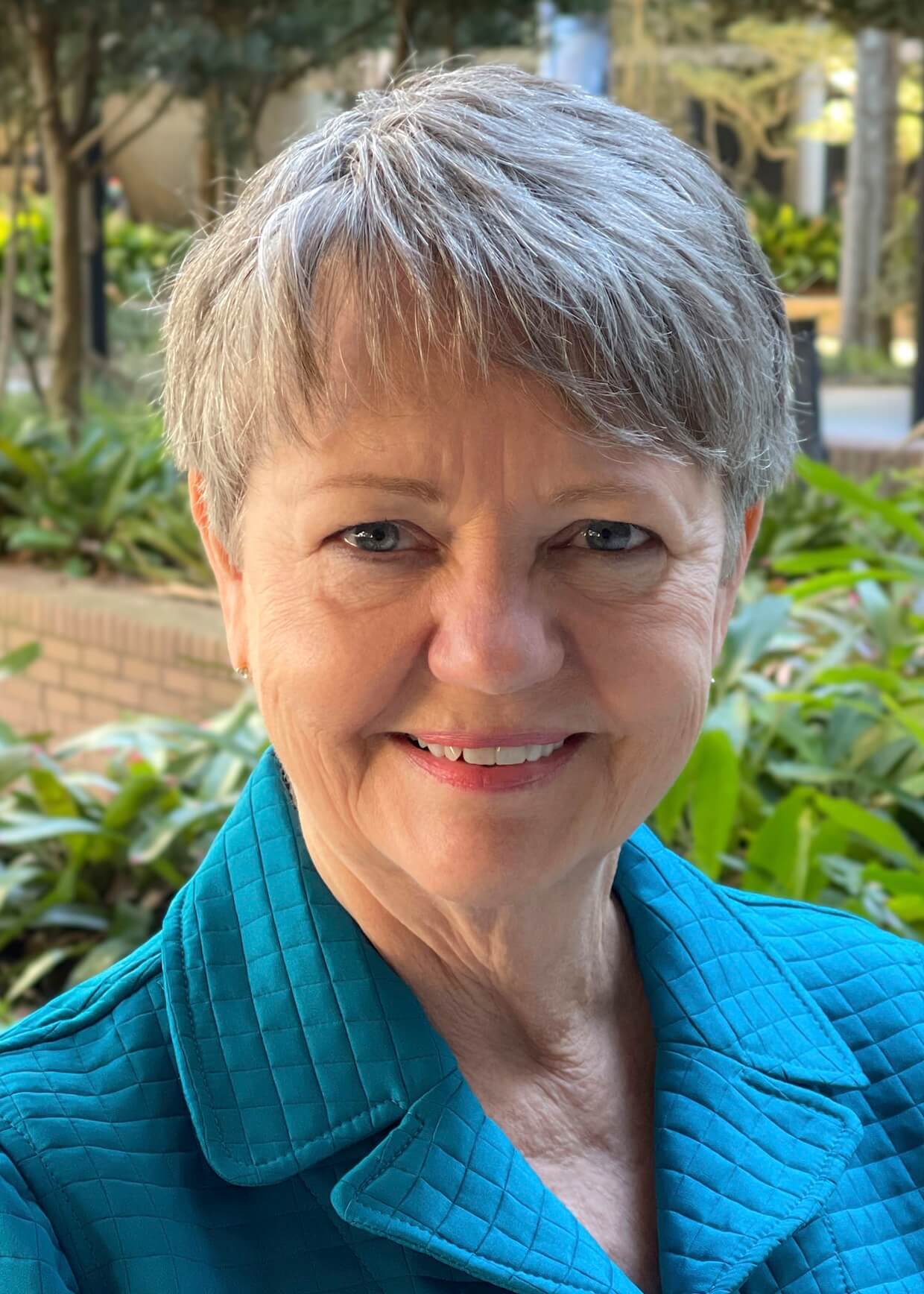
Here is the transcription of the interview with Professor Julie Ingersoll with some edits.
How Christian Nationalism Challenges Secular Governance in the US
Professor Ingersoll, thank you very much for joining our interview series. Let me start right away with the first question: The US was founded on the principle of religious freedom, yet religion has always played a central role in shaping its political identity. How do you see the tension between secular governance and religious influence in American political history?
Professor Julie Ingersoll: That’s a really complicated question, which is interesting because most of the discourse about it is very simplified. You have one faction in the US that says the Founding Fathers wanted religion in the public square, and then another faction that says, "No, no, no, they were secularists," when, in fact, the historical truth is somewhere in between.
The way the Constitution was originally set up, there was no federal prohibition on established churches; the prohibition, or the Establishment Clause, only applied to the federal government. So, in the founding era, there was an assumption that the federal government would be religiously neutral, as a compromise between the different religious communities that were dominant in various states. However, there were state-established churches at that time, and I believe the last state to disestablish its churches was Massachusetts in the 19th century.
So, it isn’t the case that America’s founding was based purely on religious freedom. Rather, it was a decentralized system that evolved over time. This, in part, is why the conflict over secular governance and religious influence continues today.
Christian Nationalism has been a growing force in American politics. In what ways has it influenced policy-making and public discourse, and how does it compare to earlier religious movements in American history?
Professor Julie Ingersoll: Well, the conversation about religious nationalism using that label is relatively recent. If you go back to the middle of the 20th century, we were talking about the Religious Right. Then we talked about the New Religious Right, which meant that we needed a name for what came before, so we called that the Old Christian Right. Then there was the Tea Party and other movements.
In my view, these movements were just different iterations of the same impulses, but scholars and journalists have given them different names, demarcating them from each other. I think that’s a problem because we lose the thread that shows that this tension—between a secular civil society and a religious civil society—goes all the way back to the founding era and even the pre-founding era. When the Puritans settled New England, they thought they were building a theocracy. They wanted religious freedom for themselves, not for everyone.
So again, this tension runs throughout American history and is replicated in different eras. Today, we are calling the side that wants a theocratic—or at least theocratically tinged—public square "Christian Nationalists." But, in my view, this is not a new movement.
How Religious Narratives Shape American Power and Policy
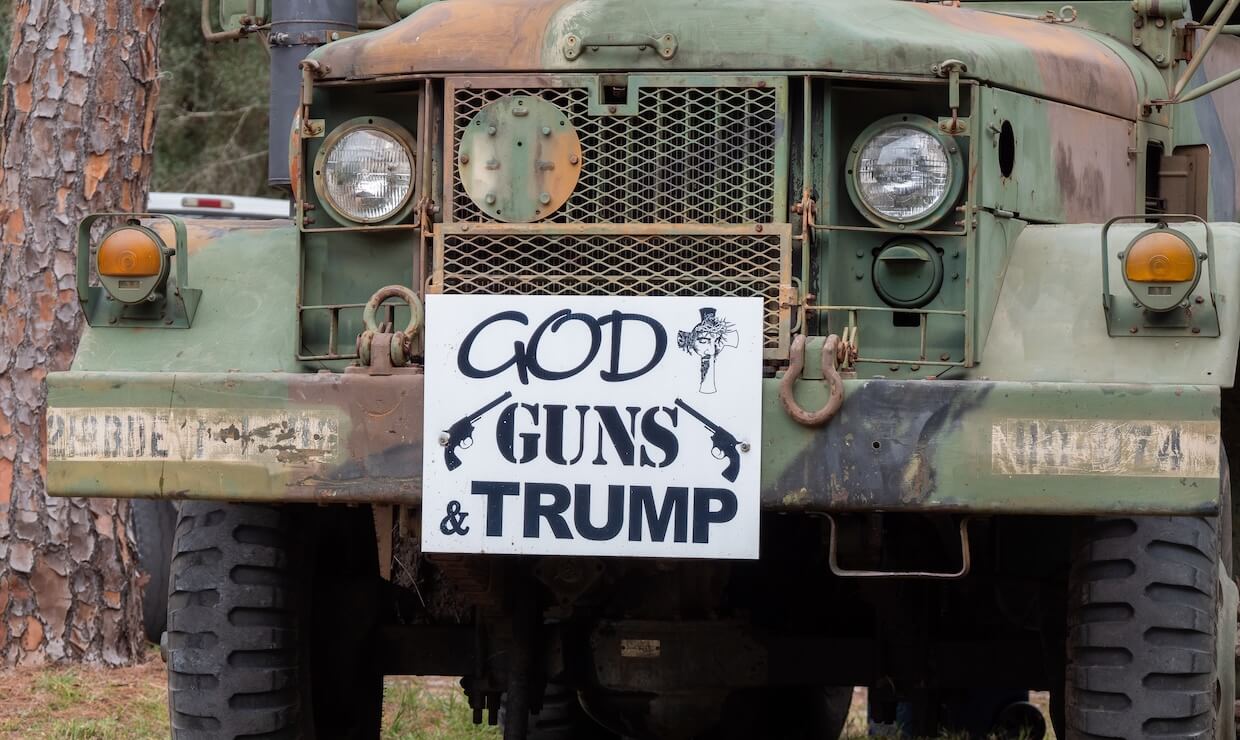
Many political leaders have framed the US as a divinely chosen nation. How has this religious narrative shaped American foreign and domestic policies over time?
Professor Julie Ingersoll: Oh, that’s such a huge question, isn’t it?
I think the most important thing is what Americans have come to call American exceptionalism. When the Puritans built a theocratic New England, they used the famous phrase that Ronald Reagan later popularized—that it was going to be a "city on a hill." This phrase came from the Puritans, and what they meant by it was that their society would be so impressive that everyone around the world would emulate it. So they had these kind of expansionist goals from the very beginning.
It was always rooted in this divine right that early Americans believed they had—and that many Americans still do—to shape not only their own communities but also to transfer what they think is God’s will to the rest of the world.
Evangelical Christians have been a powerful political bloc, particularly since the late 20th century. What historical factors contributed to their political influence, and how has it evolved in the 21st century?
Professor Julie Ingersoll: Again, I have to say I’ve been very impressed with your questions. They’re rooted in some solid research on the issues at hand, and even in my own work, for the purpose of asking me questions, and I appreciate that so much.
My book Building God’s Kingdom traces the rise of today’s iteration of theocratic Protestantism. Now, there are a couple of other threads that make up the contemporary movement that we’re calling Christian Nationalism, and we could talk about those. But the Protestant movement itself is rooted in a mid-20th-century obscure group called Christian Reconstructionism.
The Christian Reconstructionists had a whole worldview about how the Bible applies to every area of life, and they meant that literally. They detailed how that would play out in a biblical society. Most theological systems sort of fall by the wayside. Most of the ones that have developed across history we’ve never even heard of, let alone have they taken hold.
But what happened with the Christian Reconstructionists is they developed the view that public education was unbiblical and that it should ultimately be dismantled. In order to make that happen, they developed the Christian school movement, and the foundations of that led to the Christian homeschool movement. Without the Christian Reconstructionists, you wouldn’t have had those movements, and those movements spread the obscure group’s ideas out to the broader conservative evangelical subculture.
People who had never heard of Christian Reconstructionists often sent their kids to Christian schools, and the Christian Reconstructionist way of thinking about things framed the curriculum that Christian schools promote. Then, of course, a decade or so later, on that foundation, the Christian homeschool movement developed. So those two educational movements, which have been 75 years in the making, have shaped this contemporary evangelical understanding of the relationship between church and state and the role of Christians in politics.
The Role of Religion in Shaping Social Change and Political Polarization
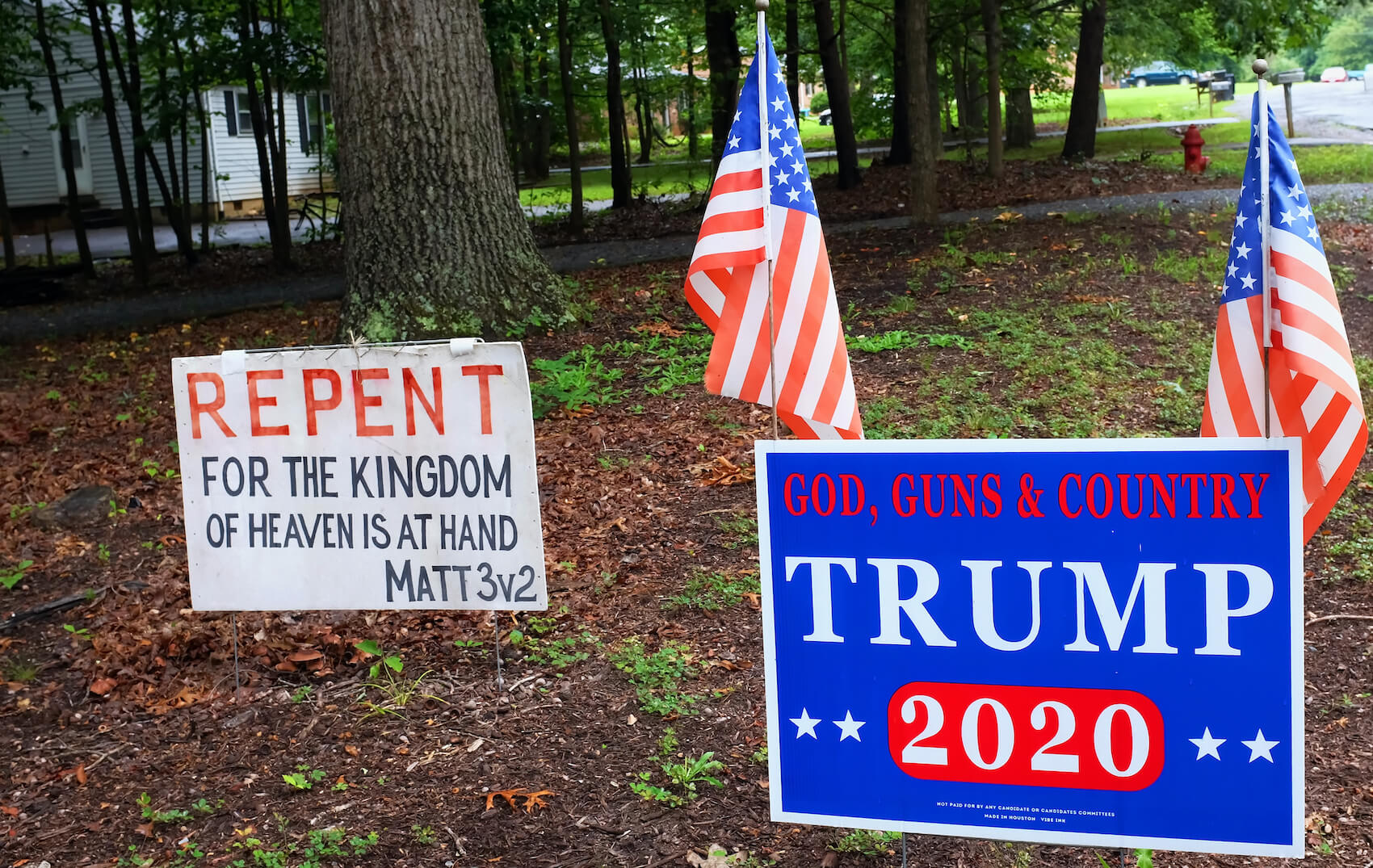
Religion has played a dual role in both supporting and resisting social change in America, from abolitionism to civil rights to contemporary issues. How do religious traditions shape activism and policy debates today? Your work especially discusses the rise of affective polarization in American politics. How do religious identity and political affiliation reinforce each other in this dynamic?
Professor Julie Ingersoll: I consider it a rise of affective politics. My approach to the study of religion comes out of social science and even social history rather than theology. People who approach religion through the study of theology presuppose that theological systems, theologies, and ideas come first and that cultural developments follow.
I, as a social scientist, take a different view. I think culture comes first. For me, there is no Christianity that exists apart from history and culture. So I don’t think you can go back to a time where affective politics wasn’t part of what we are now calling religion. I think religions serve to establish social boundaries between different groups, reinforce those boundaries, and make people inside those boundaries feel like they have a particularly correct, appropriate, or valuable way of seeing the world over and against the people that get put on the outside of those social boundaries. And that’s deeply political from the very beginning.
So, I don’t know that if that has changed. But it is the case that progressive Christianity has long served as an alternative vision of how religion should engage in politics. Certainly, in America, the Black Church has had a deeply profound influence on thinking about how religion might engage in the public square, and these are starkly different versions of what Christianity means in the political sphere.
The versions between, say, the Black Church, progressive Christians, and Socialist Catholics share certain understandings about how Christianity should engage the public sphere. And that’s very distinctly different from how the Christian Nationalist, Christian Reconstructionist folks think about how Christianity should shape the public sphere.
Can you please explain the concepts of Christian Reconstructionism and Christian Nationalism for our audience? Your work traces the ideological influence of Christian Reconstructionism on contemporary politics. What are the keyways in which Reconstructionist theology continues to shape the Christian Right today?
Professor Julie Ingersoll: The Christian Reconstructionist movement—this is what I primarily write about—has its origins at least as early as the 1950s, but certainly the 1960s in the US. The key figure there was R.J. Rushdoony.
He developed a system in which Christians think of the Bible as a continuous whole, from Genesis to Revelation. They don’t understand there to be a disjuncture between the Old Testament and the New Testament the way a lot of modern Christians do. They believe that this continuous revelation from the Old Testament to the New Testament provides everything needed to understand how to live in the world.
There are theological structures through which they interpret what the Bible says about specific topics, and we could discuss this if you’d like. But for some people, that level of detail is a little too in the weeds. Nevertheless, they develop a system that speaks to every part of life. A central idea in this system is that God granted authority to humans in three distinct spheres: the church, the family, and civil government. These encompass everything regarding how humans should live, at least according to Christian Reconstructionists.
Each of these spheres has distinct tasks and is given specific authority. They are not allowed to interfere with the authority granted to the other spheres. This concept becomes particularly important when discussing education because, in this framework, education is a task assigned to families. Therefore, the state has no legitimate role in educating children. This belief leads them to conclude that public schools are unbiblical and should be dismantled.
This also explains how they can claim to believe in the separation of church and state, even though, from an outside perspective, it doesn’t appear that they do. In their view, the church and the state have separate authority derived from God and are assigned separate tasks. However, both remain under the authority of the Bible, making it a theocratic system despite the distinct roles of church and state.
This distinction confuses a lot of people. Some assume they are simply being dishonest when they claim to support the separation of church and state. They’re not lying. The question is how much they allow the misunderstanding to persist. Some people will hear them say they believe in the separation of church and state and just accept it at face value. Others will push back and say, "But that doesn’t make sense." And if you press them, you’ll see that they mean something entirely different by it.
Christian Nationalism Plays Huge in the Second Trump Administration
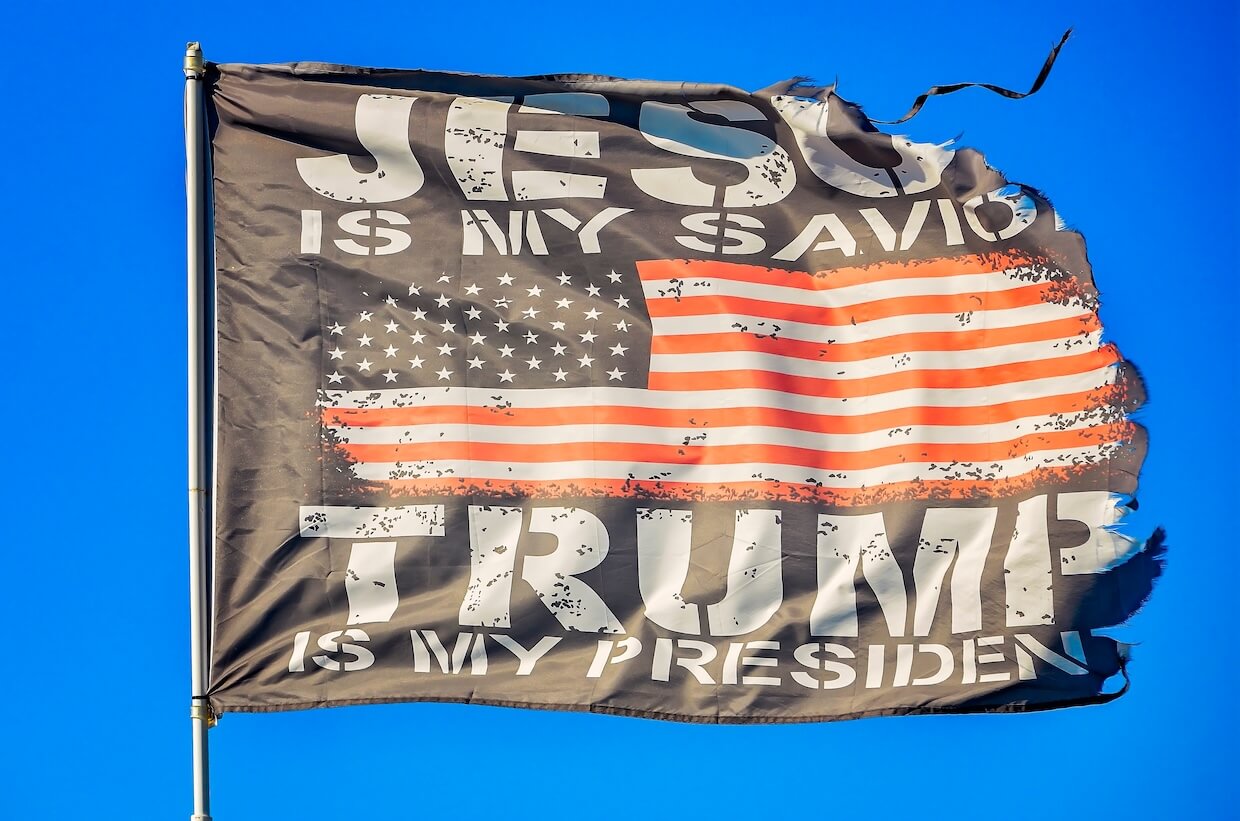
What roles do these two concepts, Christian Reconstructionism and Christian Nationalism play in the second Trump administration?
Professor Julie Ingersoll: Well, it’s huge, it’s huge. And this is where we can get into expanding our understanding from Christian Reconstructionism specifically to the broad-based coalition of various versions of Christianity that are in power at the moment.
So, in the movement that we’re calling Christian Nationalism, you do have a thread rooted in a kind of traditional Protestantism—a Calvinist kind of Protestantism, such as Presbyterianism, maybe some early Baptists, or the Christian Reformed movement—and that is Christian Reconstruction. But in addition to that, you have a charismatic Pentecostal movement.
For readers or listeners who may not be familiar, Pentecostalism emerged in the 20th century as a version of Christianity that emphasizes a literal spiritual realm. It includes practices distinct from other forms of Christianity, such as speaking in tongues, miraculous healing, and other actions described in the Bible that most other Christian traditions tend to mythologize. These believers are called Charismatics and Pentecostals.
In the 1980s, Christian Reconstructionists started working with Pentecostals to bring them around to the idea of applying the Bible to every area of life. They called this Dominionism. Over time, this Dominionist Pentecostalism evolved into what is now called the New Apostolic Reformation (NAR).
When you see figures like Paula White, who was appointed head of the faith-based office in the White House, she comes from this New Apostolic Reformation movement. While it may sound benign, their view of "spiritual warfare" is central to their ideology. They don’t interpret it as a personal struggle against sin, as many Christians do, but as a literal battle in which people are divided into God’s people and Satan’s people. This apocalyptic worldview has become a crucial part of the movement.
At the same time, the Christian Reconstructionists and the New Apostolic Reformation have joined forces with a third movement within US Christianity: Catholic Integralism. This movement draws from a medieval form of Catholicism in which the Church and State were united under a monarchy. You can see this influence at institutions like the Heritage Foundation, which produced Project 2025.
All three of these groups—Christian Reconstructionists, the New Apostolic Reformation, and Catholic Integralists—share key components of Christian Nationalism and have made common cause. One shared component is a theocratic impulse; they all seek to make religion the dominant force in shaping how society functions. While they may have different visions of what that should look like, they agree on the goal.
Another shared characteristic is their lack of commitment to democracy. They are fine with democracy if it leads to a religiously based, biblical society, but they are also comfortable with monarchy or authoritarian structures as long as they result in the "right" kind of biblical society. These groups have united around these core ideas.
In practice, their influence is visible. There is a faith-based office in the White House led by a New Apostolic Reformation figure. Catholic Integralists were behind Project 2025, which essentially serves as the policy agenda for the Trump administration. Meanwhile, Christian Reconstructionists laid much of the ideological groundwork over the last 75 years to make this possible.
So, yeah, I think that answers your question.
Tech Elites and Religious Extremists Unite to Undermine Democracy and Equality
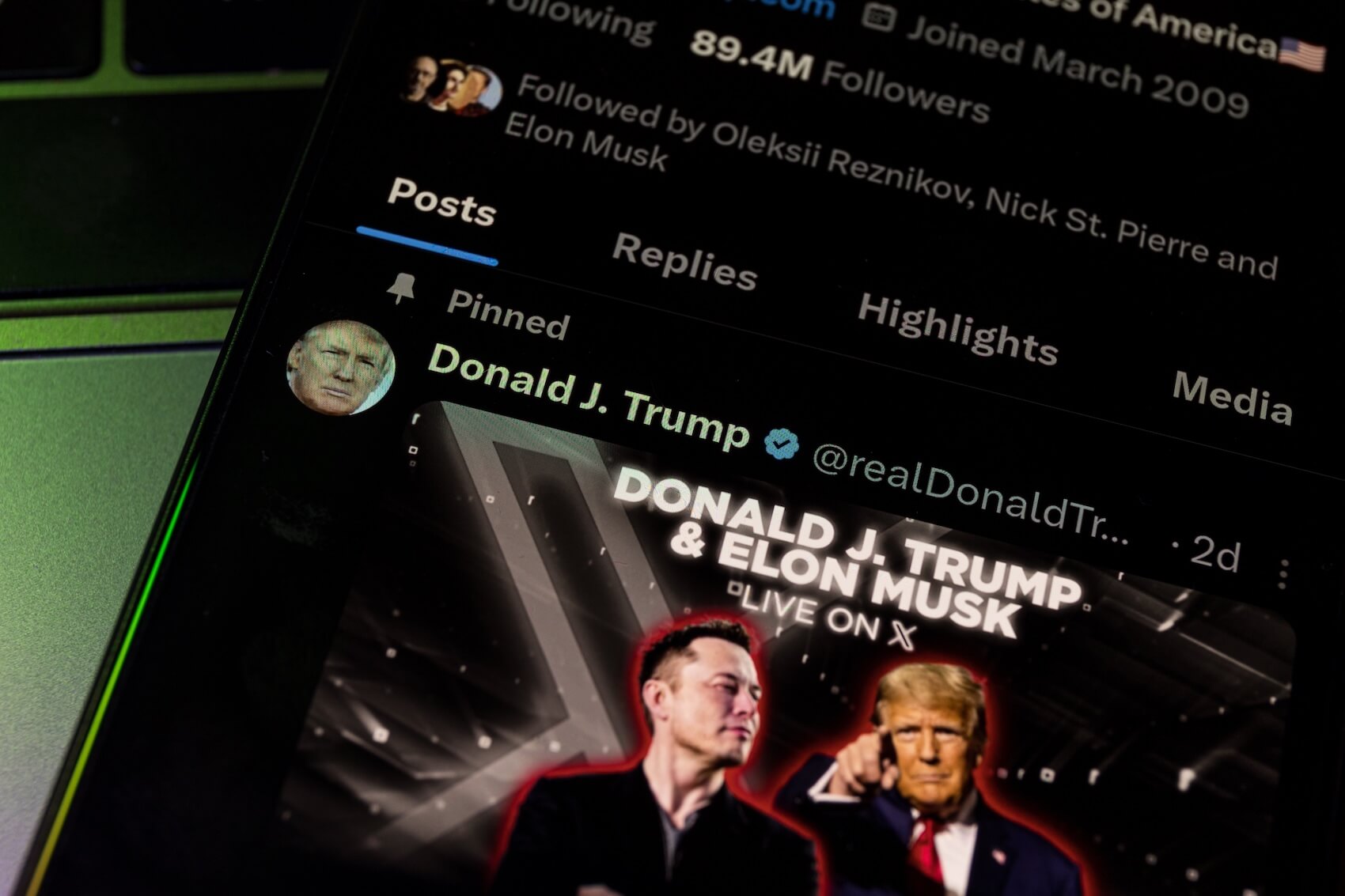
In the interview you gave to the Guardian on January 24th, you underline that: ‘“When these guys say they believe in the separation of church and state, they’re being duplicitous. They do believe in separate spheres for church and state, but also in a theocratic authority that sits above both.’ Do you mean that Trump and his team do endorse a theocratic authority above democracy? If yes, how much of a danger do these people pose to American democracy and American secularism?
Professor Julie Ingersoll: Well, I didn’t mean Trump necessarily. I meant the coalition of Christian groups that are behind the Trump administration. Because I think that you do have more secularized versions of political organization that also join in the goals of the Christian Nationalists. So let me back up just a little bit.
Because I treat religion like a social scientist, I recognize that the categories we’re using to talk about these things are socially and culturally produced. So, for example, the distinctions between the Reconstructionists, the New Apostolic Reformation, and the Catholics—we can think of those as distinct and separate movements with clear-cut boundaries for the purpose of understanding. But in reality, that’s not the case. These are fluid movements, and they make common cause where it’s useful. The people on the ground are not necessarily concerned about theological consistency, so they’ll embrace part of what one of these groups says and let go of the rest if it doesn’t fit their worldview.
Likewise, there’s no strict division between these three religious groups that we’re calling Christian Nationalists and other groups that we might not think of as religious but share some of the same underlying concerns about how society should function. For example, I think the best contemporary example is the "Tech Bros" out of Silicon Valley. These folks are not religious per se. They’re not necessarily connected to Christian Nationalism, but they share underlying views about how society should be ordered. They believe that certain people are naturally more equipped to be leaders, while others ought to be followers. They hold a commitment to the idea that there is some moral right for those who are equipped to lead to take charge and do what they think is best.
These Tech Bros coming out of Silicon Valley are also not committed to the idea of democracy or to the principles of equality that underpin it. All three of those religious groups, along with the Tech Bros, agree that equality is a problematic category. They are not committed to the idea that all human beings are equal, and they believe that efforts to promote equality in society undermine the strength and power of society.
So the lines between the religious groups and the secular groups aren’t as clear in reality as we often think they are. We talk about them as though they are distinct, and in some ways, they are, but in other ways, they are not. So, in Trump’s administration, you have a coalescence of factions in society who do not believe in equality, who aren’t committed to democracy, and in particular, who—at least in expressions found in the US—believe that white people are superior and that men are superior.
So, in terms of leadership, you’ll see that play out in the administration, where the leaders will mostly be white and mostly be men, and they will actively work to undermine what has historically been a commitment to increasing equality in civil society. That is a goal they do not support. You also see this playing out in international relations. It comes down to this idea that "might makes right."
And with Trump’s recent conversations about Gaza and about Ukraine and Russia, the underlying thread is that if you have the power to take the land, then it’s okay. It’s moral for you to do so. If you have the power, you have the right to do it.
All of these groups might have different justifications for why they have power. The Christian ones will say, "Well, we have the power because God gave it to us." Others might not invoke God but instead claim that power comes from a kind of moral superiority of a certain class of people. But in practice, those two views aren’t different. They both build a society that is colonizing.
Christian Nationalism’s Theocratic Push and Its Threat to Democracy
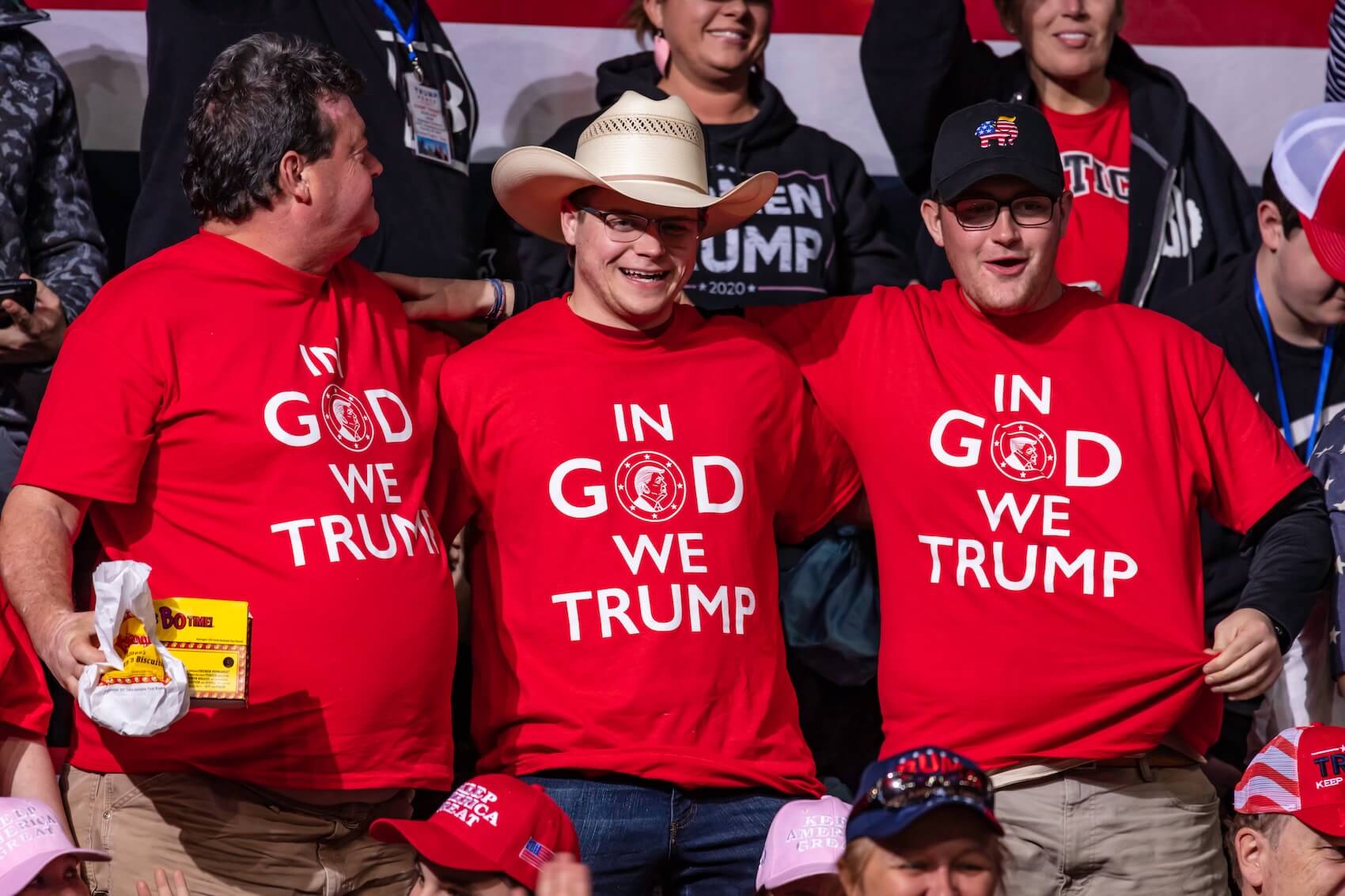
In the same interview, you argue that "So their commitment is to theocracy: the government of civil society according to biblical law and biblical revelation." Can we call this the resurgence of Christian fundamentalism? How do you think fundamentalist Christian groups and other religious movements will be affected by the second Trump administration?
Professor Julie Ingersoll: For me, fundamentalism is a specific movement in Christianity that is tied to a particular place and time. It’s a Protestant Christian movement that originates in the late 19th, early 20th century, and has its heyday up through, say, the 1950s. It’s a specific thing, and efforts to argue that there are fundamentalists across the globe and to export that language, I think, are problematic.
But here’s another way to think about it. There’s a scholar in religious studies whose work I use a lot and really like. His name is Bruce Lincoln, and he talks about religious movements in terms of how they understand their place in larger society. He categorizes them into two groups: minimalist and maximalist.
He explains that Enlightenment philosophers were attempting to put a hold on the wars of religion that were happening in Europe. They aimed to make religion exist within its own sphere, distinct from the rest of society. Religion was still very powerful in a spiritual and personal way, but not in a public way. He calls the movements that adopted this modernist way of thinking about religion "minimalist." He calls those that reject it and believe that religion speaks to all areas of life "maximalist."
I think that is a more helpful framework for conceptualizing this issue. If you consider early fundamentalism in 20th-century America, they were maximalist. They rejected the idea that religion should be limited to a private, personal matter. Certain forms of Islam around the world are also maximalist, just like Christian fundamentalists of the 20th century. Other forms of Islam are minimalist. American Muslims, for example, mostly resemble other religious groups in the US in this regard.
At my university, we often have interfaith events where a Protestant, a Catholic, a Jew, a Hindu, and a Muslim share a stage and talk with each other. It quickly becomes clear that they have more in common with one another as minimalists than they do with their counterparts under the same religious label who are maximalists. My colleagues at UNF, who are Muslims, are minimalist Muslims, and they can engage in discussions with minimalist Jews, but they don’t really talk to maximalist Muslims. The same pattern applies to Jews, Christians, and Hindus.
So, I think this is a better way to understand the rise of fundamentalism. These categories are less tied to a specific place and time than the language of fundamentalism itself.
In your article titled ‘Classification matters: Hiding violence in Christianity in the US,’ you argue that: “Since Christianity is the dominant religious tradition in the US, it is the beneficiary of rhetorical structures and classification systems that function to obscure its relationship to violence.” In the West, it is usually Islam that is strongly associated with violence. How do you think these classifications shape public perceptions of religious extremism in the US? Can you explain the relationship between violence and Christianity and the dynamics of this relationship?
Professor Julie Ingersoll: Well, this is great because this question follows the last one, right? We’re not talking about all Christians. Christianity in general, if there were such a thing, isn’t necessarily violent, but there are forms of Christianity that see the employment of violence as legitimate, just as there are forms of Islam, Judaism, and Hinduism— and even Buddhism—that legitimize the use of violence.
By those structures that hide it, in the context of the US—a society infused with forms of Christianity—the result is that, a decade ago, as Americans, we could readily see Islamic forms of violence around the world. But when a group identified with Christianity enacted violence, there was no notion that it represented Christianity in general, right? So, when Muslims committed acts of violence, they were associated with all of Islam. But when Christians committed acts of violence, they were disassociated: Oh, that’s an aberrant form of Christianity. Those aren’t “real” Christians, right?
Those dividing lines separated the rest of us—who are “nice people” and “not violent” (in quotes as a distancing mechanism)—so that everyday Americans could look at someone like Timothy McVeigh, who blew up the federal building in Oklahoma City, killing a lot of people, including many children, and say, Oh, but he wasn’t really a Christian. But yes, he was. Yet he didn’t get identified as a Christian terrorist. He didn’t even get identified as a terrorist. He was labeled as a kind of right-wing crazy guy who committed a violent act.
If Timothy McVeigh had been a Muslim, that would have been framed as Islamic violence attacking us. The way these events are framed is shaped by the fact that Americans take for granted a Christian backdrop and more easily discern the distinctions between various forms of Christianity than they would with a religious tradition that is less familiar.
There are other answers to that question, but yeah, this discussion could go on for a long time.
The Media’s Failure to Capture Long-Term Influence of Christian Nationalism
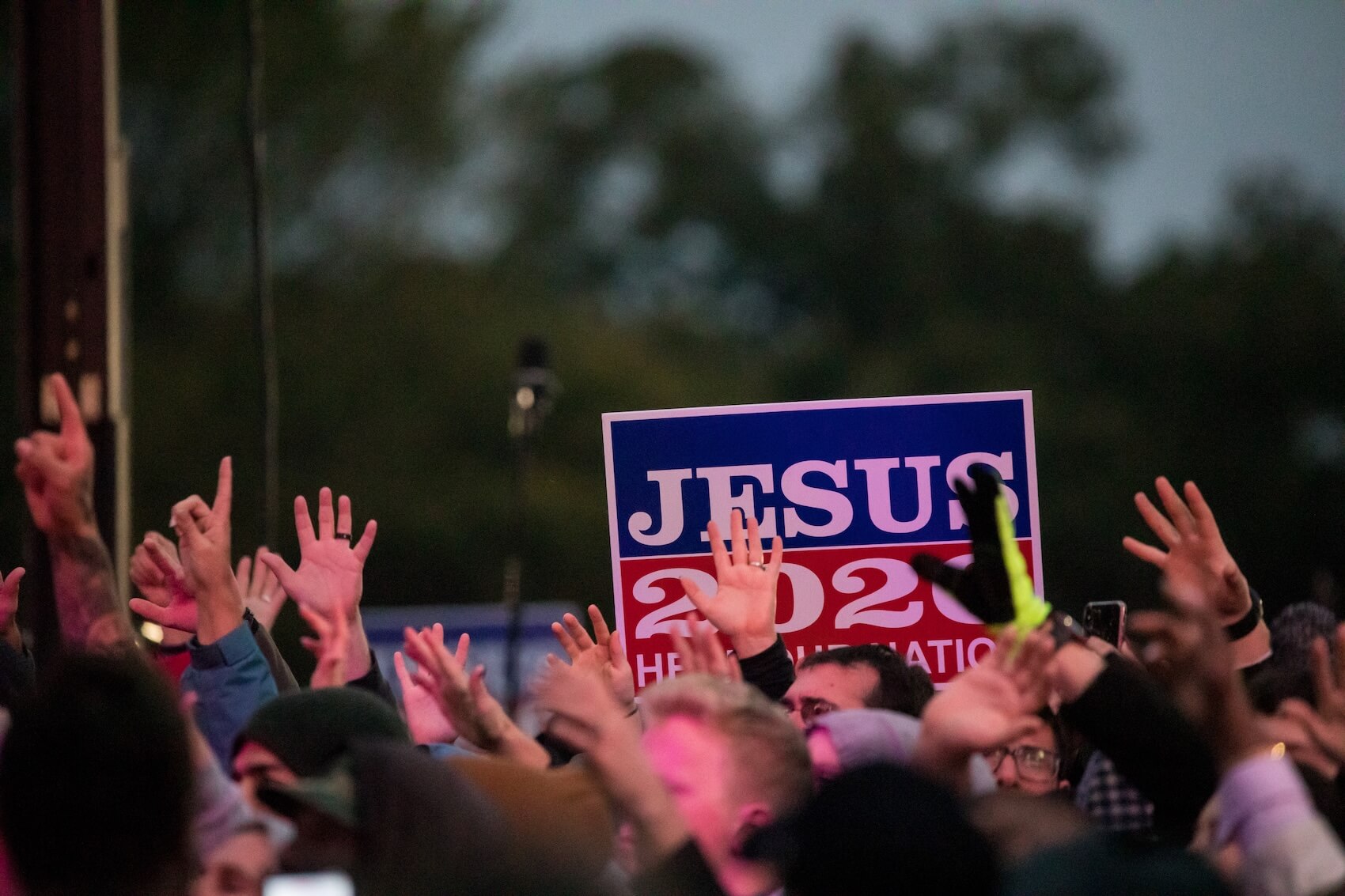
And the last question, Professor Ingersoll; in the article “From Christian Reconstruction to Christian Nationalism: What the media need to know about the 75-year effort to establish theocracy in the US,” you critique how media coverage of Christian Nationalism often fails to grasp its long-term influence. What changes would you recommend for journalists covering this topic?
Professor Julie Ingersoll: Well, it’s interesting how you organize this, because this question really brings us back to much earlier in our conversation about Christian nationalism—what it is and how we think about it. One of the things the media does—and scholars do it too, particularly those who don’t root their work in history and lack a historical sense of the development of things—is systematically rename this group of Christians, whatever you call them.
The consistent renaming happens about every 10 years. Around five or six years into that cycle, reporters say, Oh, well, they’re gone now. Then, a few years later, they’re not gone. A few years after that, something happens—often an election—and people start recognizing them again, but under a new name.
This renaming has some advantages. For example, talking about evangelicalism—which is how I used to refer to this movement—suggests that it is mostly Protestant. Calling it Christian nationalism today expands the way we see it to include Catholics and Charismatics, which is helpful. But the problem with this renaming is that it erases the historical trajectory.
As a result, we, as a culture, think this movement has just arisen out of nowhere. In fact, some reporters even ask, Who could have thought this would happen? Well, everybody who has been paying attention should know that this could happen because they’ve been trying to do it for at least 75 years—really, even longer.
We miss the long-term time horizon with which these people work. If we rename them every 10 years, decide they have disappeared, and fail to connect the previous version to the new one that arises, we misunderstand the movement. Because of this mistaken sense of time, we think we can address the issue within an election cycle. People believe that if they can just power through the Trump administration for two years, they can change everything in the midterms.
We might have a midterm election—I hope we do—and we might be able to change the composition of the three branches of government in a way that could make things better. But even if that happens, this movement doesn’t go away. They’ve been working on this for a long time, and they will continue to work on it.
Two quick illustrations of this long-term project:
- Project 2025, which now serves as the blueprint for a second Trump administration, didn’t come out of nowhere. The Heritage Foundation started developing these plans—under the larger name The Mandate for Leadership—going into the Reagan administration. Every four years, they have released a new version. The latest one is by far the most comprehensive. They got right to work at the end of the last Trump administration, and if you read that document, the level of detail is overwhelming. This is the most coherent version of their strategy so far, but it is not new. They have been doing this since the late 1970s.
- Christian Reconstructionists in the homeschool movement have created a curriculum that instructs families to build a 200-year plan for a family dynasty. They encourage homeschooling families to sit down at their kitchen table and map out a two-century-long plan for their descendants.
This is not something that can be resolved in two years. What I would like the media to recognize is the long-term nature of this movement because the only way to address it is to also work long-term.

